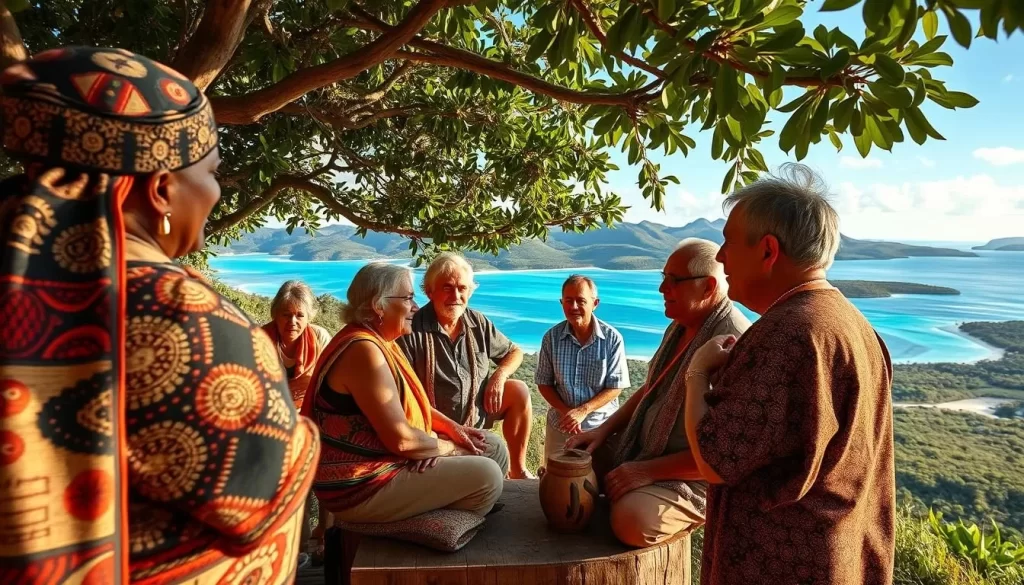Welcome to the Australian Capital Territory, a unique region that serves as the heart of government and a vibrant cultural centre. Located approximately 240 km southwest of Sydney, this territory is home to over 400,000 people, reflecting steady growth over the years.
Language plays a vital role here, with 18% of residents speaking a language other than English at home. This diversity mirrors the national average and highlights the territory’s multicultural identity.
From its historic landmarks like the High Court and National Gallery to its modern developments, the ACT blends tradition with progress. Explore how language and culture shape this dynamic region, making it a fascinating place to discover.
Introduction to Language Diversity in the ACT
The ACT thrives on a rich tapestry of languages. This diversity reflects its multicultural identity and connects every group in the region. Language is more than just a way to communicate; it’s a vital plant in the growth of cultural traditions and histories.
Language as a Cultural Identity
Language plays a crucial role in shaping personal and community identity. Families often pass down their native tongues, preserving cultural values. For many, speaking a language other than English at home is a way to stay connected to their roots.
Religion also influences how language is used and valued. For example, certain communities use specific languages in religious practices, adding another layer to their cultural identity.
Understanding the Role of English
While English is the dominant language, it serves as a common medium for communication. Over 72% of residents speak only English at home, but the remaining 28% contribute to a vibrant linguistic mosaic.
Language acts as a living animal within communities, constantly evolving and adapting. This dynamism is celebrated through festivals, events, and educational programs that highlight the region’s linguistic diversity.
| Language | Speakers (2021 Census) |
|---|---|
| Mandarin | 685,274 |
| Arabic | 367,159 |
| Vietnamese | 320,758 |
| Cantonese | 295,281 |
| Punjabi | 239,033 |
This table highlights the most common languages spoken in the region, showcasing the depth of its linguistic landscape. From Mandarin to Punjabi, each language adds a unique thread to the ACT’s cultural fabric.
Australian Capitol Territory, Australia: Official and widely spoken languages
Language practices in the ACT reflect its dynamic cultural landscape. While English is not officially mandated, it serves as the de facto national language. This is evident in everyday communication, where over 72% of residents speak only English at home.

De Facto Language Policy and Practice
The ACT’s language policies are shaped by its multicultural identity. Although there is no official language, English dominates in schools, workplaces, and government institutions. This ensures clear communication across diverse groups.
Proximity to New South Wales also influences language habits. Many residents commute between the two areas, blending linguistic practices. This interaction enriches the ACT’s linguistic diversity.
Census Insights and Language Statistics
The 2021 Census provides valuable insights into language use. Mandarin, Arabic, and Vietnamese are among the most spoken languages after English. These findings highlight the region’s inclusive and multilingual character.
With a population of over 475,600, the ACT’s linguistic landscape continues to evolve. This growth is driven by migration and the area’s role as a cultural centre.
Historical Language Influences and Migration Impact
The history of language in the ACT is deeply tied to migration and policy. Over the years, waves of newcomers have shaped its linguistic identity. From early settlers to postwar immigrants, each group has left a lasting mark.

Postwar Immigration and Its Linguistic Legacy
After World War II, the ACT saw a surge in migration. Many arrived from Europe, bringing their native tongues. This period marked a turning point, as new languages enriched the region’s cultural fabric.
Projects like the Snowy Mountains Scheme attracted workers from diverse backgrounds. These construction efforts not only built infrastructure but also fostered a multilingual community.
Historical Policies Shaping Language Use
Policies played a key role in shaping language practices. For example, early decisions on land distribution influenced settlement patterns. This, in turn, affected which languages thrived.
New South Wales’ proximity also had an impact. The ACT’s development was closely linked to its neighbor, blending linguistic traditions.
| Period | Migration Source | Linguistic Impact |
|---|---|---|
| 1901-1945 | United Kingdom | Strengthened English dominance |
| 1946-1970 | Europe | Introduced Italian, Greek, and German |
| 1971-Present | Asia and Middle East | Added Mandarin, Arabic, and Vietnamese |
This table highlights how migration has shaped the ACT’s language landscape over time. Each wave brought new voices, creating a vibrant tapestry of cultures.
Aboriginal and Torres Strait Islander Languages in the ACT
The rich heritage of Aboriginal and Torres Strait Islander languages adds depth to the cultural identity of the ACT. These languages are more than just a means of communication; they are a vital part of the region’s history and traditions.

Preserving Indigenous Tongues
Over 250 distinct Aboriginal languages were spoken at the beginning of colonization, but fewer than 150 remain in daily use today. Many of these are endangered, with only 13 still being passed down to children. Efforts to preserve these languages are crucial for maintaining cultural identity.
Community-led initiatives play a significant role in this preservation. Programs focus on teaching indigenous languages to younger generations, ensuring they remain a living part of the culture.
Revitalization and Community Efforts
Revitalization projects are making a difference. For example, the Kaurna language, once thought extinct, has been successfully reconstructed from historical records. Such efforts highlight the resilience of indigenous communities.
Local land and cultural practices also support these initiatives. By integrating language into ceremonies and daily life, communities strengthen their connection to their heritage.
| Language | Speakers (2021 Census) |
|---|---|
| Wiradjuri | ~500 |
| Bundjalung | ~100 |
| Gamilaraay | ~100 |
“Language is the heartbeat of our culture. Without it, we lose a part of who we are.”
These efforts ensure that the legacy of Aboriginal and Torres Strait Islander languages continues to thrive, enriching the ACT’s cultural landscape.
Multilingual Communities and Their Cultural Contributions
The ACT’s multilingual communities bring a vibrant cultural energy to the region. Each person adds a unique thread to the territory’s rich tapestry, creating a dynamic and inclusive environment. Over 14% of residents speak a language other than English at home, reflecting the area’s diverse heritage.

Celebrating Diverse Heritage
Many residents in the ACT were born overseas, bringing with them traditions, stories, and languages that enrich everyday life. From family gatherings to community events, these cultural practices are celebrated and shared. This diversity strengthens the community, fostering a sense of belonging for everyone.
Local initiatives play a key role in preserving these traditions. Programs like community language schools ensure that younger generations stay connected to their roots. These efforts not only preserve heritage but also promote understanding among different groups.
Community Language Programs and Local Initiatives
The ACT Government supports over 40 community language schools, partnering with local public schools to extend learning opportunities. These programs help students develop fluency in their native tongues while fostering cultural pride.
Free interpreter services are also available, ensuring that everyone can access essential services. This commitment to inclusivity highlights the territory’s forward-thinking approach.
| Program | Impact |
|---|---|
| Community Language Schools | Teach over 20 languages to students |
| Interpreter Services | Provide free assistance for non-English speakers |
| Cultural Festivals | Celebrate diverse traditions and languages |
These initiatives not only preserve languages but also strengthen the territory’s identity. By embracing diversity, the ACT continues to thrive as a welcoming and inclusive community.
For more insights into how linguistic diversity shapes the region, explore this resource on cultural contributions.
Socioeconomic and Demographic Trends Shaping Language Use
Understanding how socioeconomic trends influence language use can reveal much about a region’s identity. In the ACT, these trends are shaped by urban dynamics, migration patterns, and the needs of diverse communities. Let’s explore how these factors come together to create a unique linguistic landscape.
Insights from the 2021 Census
The 2021 Census provides valuable data on language use in the ACT. Over 71% of residents speak only English at home, while the remaining 29% contribute to a rich linguistic mosaic. Mandarin, Nepali, and Vietnamese are among the most spoken languages, reflecting the region’s multicultural identity.
This diversity is also evident in the proportion of people born overseas, which increased to 28.7% in 2021. These trends highlight the importance of language education and community programs to support linguistic diversity.
Urban Dynamics and Language Preferences
Urban areas in the ACT play a significant role in shaping language preferences. As the population grows, so does the need for services that cater to diverse linguistic needs. For example, interpreter services and community language schools help bridge communication gaps and foster inclusivity.
Group identities also play a crucial role in maintaining linguistic diversity. Many residents pass down their native languages to younger generations, ensuring cultural traditions continue. This intergenerational effort strengthens the region’s cultural fabric.
“Language is more than a tool for communication; it’s a reflection of who we are and where we come from.”
These trends inform future planning and policy decisions. By understanding the needs of diverse communities, the ACT can continue to thrive as a welcoming and inclusive territory. For more insights into how data collection supports these efforts, explore this resource on cultural and linguistic data collection.
Modern Language Landscape and International Connections
The modern language landscape in the ACT is shaped by education and media, connecting the territory to global cultures. This dynamic interplay fosters a vibrant environment where local identity meets international influence.
Language in Education and Media
Education plays a pivotal role in nurturing multilingual skills. Programs in schools and community centers focus on teaching languages beyond English, ensuring younger generations stay connected to their heritage. Media also amplifies this effort, with local outlets showcasing diverse voices and stories.
Initiatives from New South Wales and the broader country complement local efforts. For example, partnerships with universities and cultural organizations provide resources for language learning. These collaborations strengthen the centre’s role as a hub for cultural exchange.
Recent construction projects have enhanced digital connectivity, making media more accessible. This infrastructure supports the supply of educational content and fosters global engagement.
Natural features like the Snowy Mountains inspire cultural narratives, while period trends in media reflect evolving linguistic preferences. Together, these elements shape a modern language landscape that is both rooted and forward-looking.
For more insights into how this territory embraces its multicultural society, explore this resource.
Conclusion
The linguistic diversity of this region reflects its rich cultural tapestry. Over the years, migration and historical influences have shaped its unique identity. Each person contributes to this vibrant centre, ensuring a majority celebrates inclusivity.
Key datum from the 2021 Census highlights this evolution. For instance, over 72% of residents speak only English at house, while the rest add depth to the linguistic landscape. This fact underscores the region’s adaptability and cultural richness.
Educational supply and community programs play a vital role in preserving this heritage. Initiatives like language schools ensure younger generations stay connected to their roots. These efforts create a dynamic ocean of possibilities, fostering unity and understanding.
In summary, this region remains a thriving hub where tradition meets modernity. Its linguistic diversity is a testament to its inclusive spirit. For more insights, explore this resource on language and culture.
The above is subject to change.
Check back often to TRAVEL.COM for the latest travel tips and deals.





